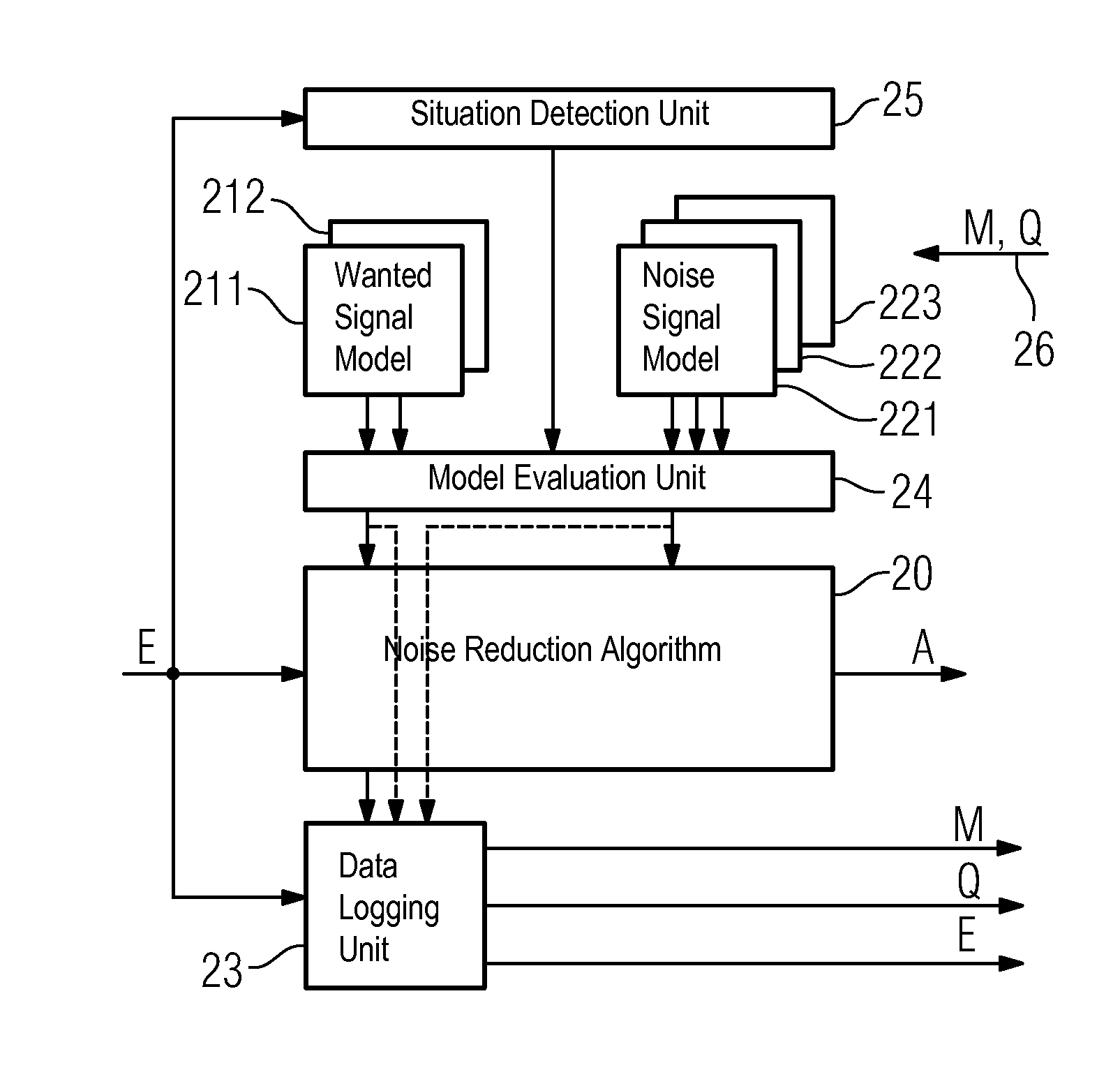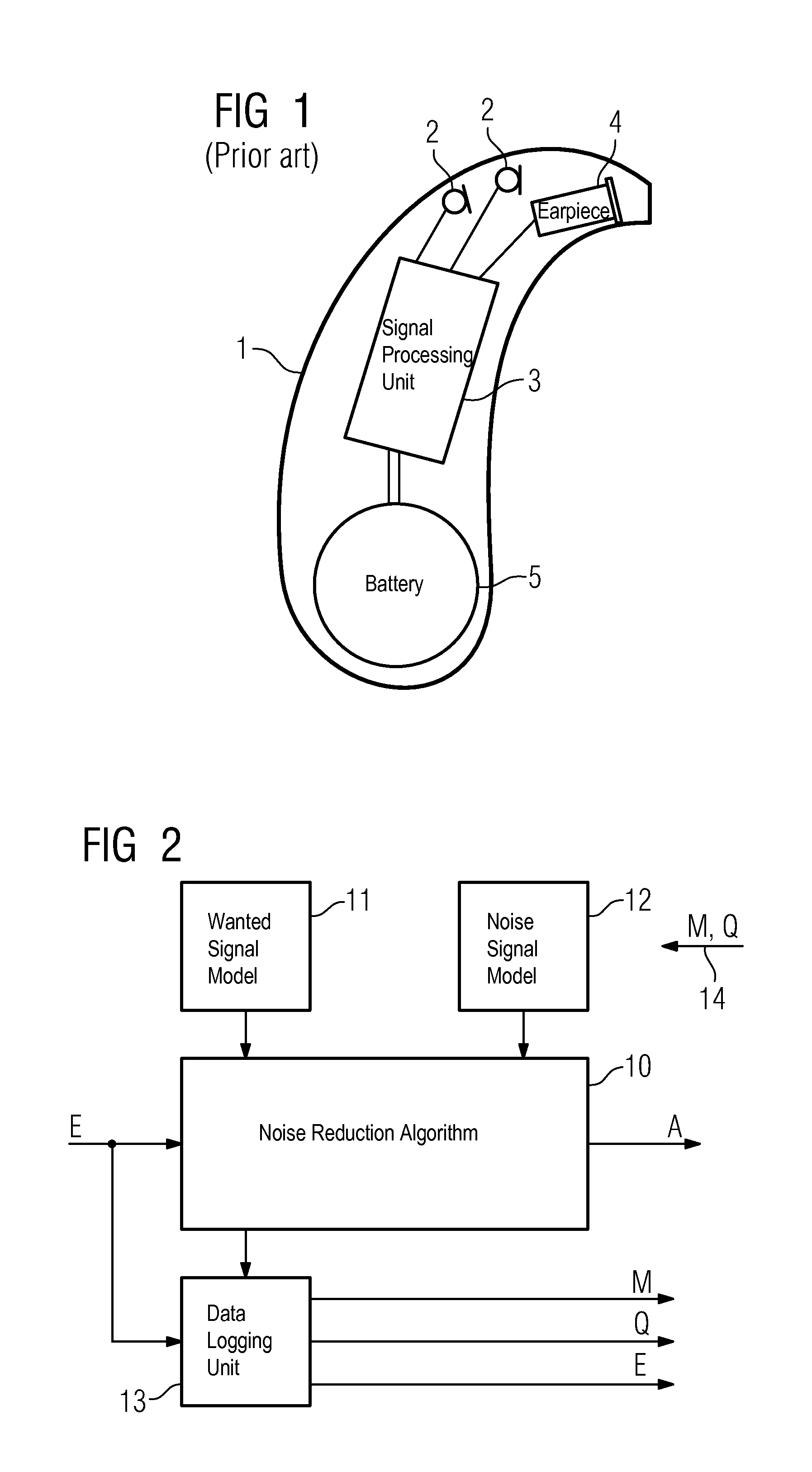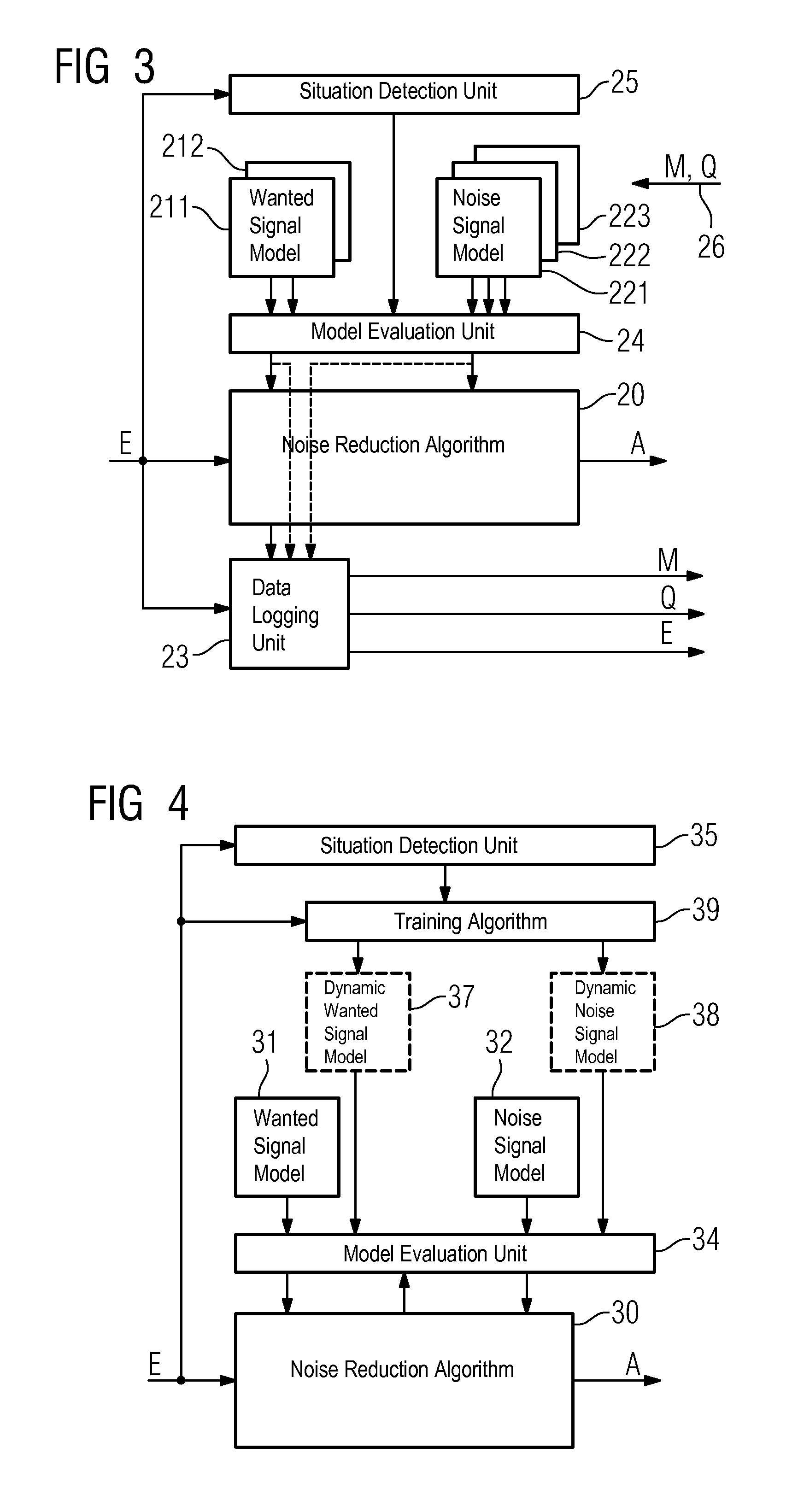Method for reducing noise using trainable models
a model and model technology, applied in the field of noise reduction, can solve the problems of complex modeling, severe limitation of noise reduction methods, and complex noise signals, and achieve the effect of complex nois
- Summary
- Abstract
- Description
- Claims
- Application Information
AI Technical Summary
Benefits of technology
Problems solved by technology
Method used
Image
Examples
Embodiment Construction
[0026]The exemplary embodiments described in greater detail below represent preferred embodiments of the present invention.
[0027]The noise suppression systems presented here generally relate to systems in which at least one noisy input signal is simulated by modeling, at least one model being used for a wanted signal component and a noise signal component in each case, the parameters of which are estimated as a function of the input signal such that the model optimally describes the input signal according to a particular criterion. Possible models typically include autoregressive models with trained codebooks as well as models with overcomplete codebooks, models based on transformations such as the Fourier transformation, the discrete cosine transformation or based on wavelet representations, models with decompositions into tonal, transient and noise-like components, signal statistical modeling or other suitable models. Using the thus obtained model-like descriptions for the wanted ...
PUM
 Login to View More
Login to View More Abstract
Description
Claims
Application Information
 Login to View More
Login to View More - R&D
- Intellectual Property
- Life Sciences
- Materials
- Tech Scout
- Unparalleled Data Quality
- Higher Quality Content
- 60% Fewer Hallucinations
Browse by: Latest US Patents, China's latest patents, Technical Efficacy Thesaurus, Application Domain, Technology Topic, Popular Technical Reports.
© 2025 PatSnap. All rights reserved.Legal|Privacy policy|Modern Slavery Act Transparency Statement|Sitemap|About US| Contact US: help@patsnap.com



